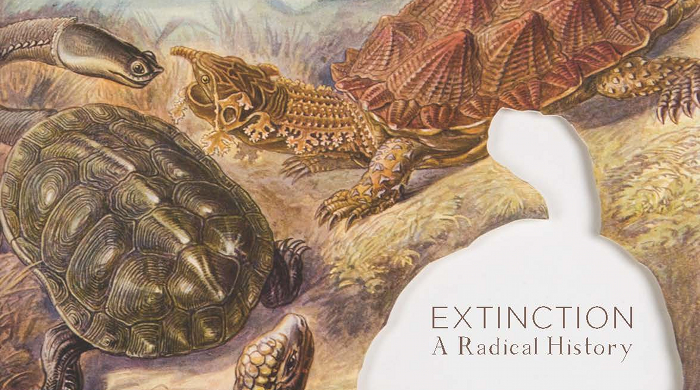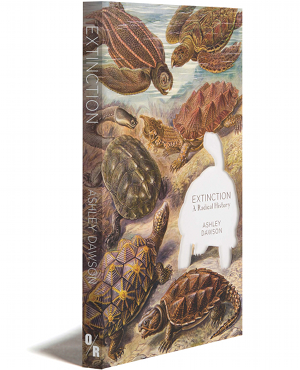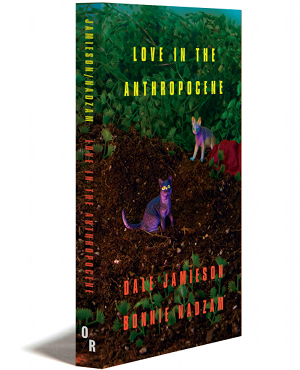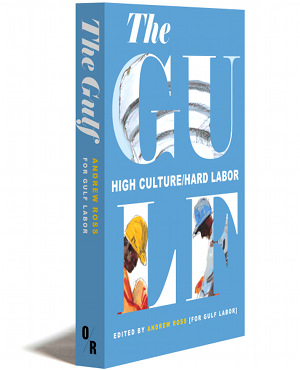Biocapitalism and the age of agribusiness
Ashley Dawson explores the consequences of capital accumulation through the commodification of nature—and what that means for firms like Monsanto, the seed giant who today accepted a $66 billion takeover from German crop chemical company Bayer.

An excerpt from Extinction:
De-extinction offers a seductive but dangerously deluding techno-fix for an environmental crisis generated by the systemic contradictions of capitalism. It is not simply that de-extinction draws attention—and economic resources—away from other efforts to conserve biodiversity as it currently exists. The fundamental problem with de-extinction is that it relies on the thoroughgoing manipulation and commodification of nature, and as such dovetails perfectly with biocapitalism. US lawyers have already begun arguing that revived species such as the mammoth would be “products of human ingenuity,” and should therefore be eligible for patenting. Species revival thus slots seamlessly into the neoliberal paradigms of research established by the Bayh-Dole Act of 1980, which legalized the patenting of scientific inquiry, as well as with the intellectual property agreements foisted on teh world since the establishment of the World Trade Organization in the mid-1990s.
De-extinction thus provides a mouth-watering opportunity for a new round of capital accumulation based on generating and acquiring intellectual property rights over living organisms. It is perhaps the most tangible and fully realized example of a shift that has been taking place since the 1980s, in which US petrochemical and pharmaceutical industries have reinvented themselves as purveyors of new, clean life sciences. Instead of generating (declining) profits through the mass-produced chemical fertilizers and pesticides of the Fordist era, agribusiness corporations like Monsanto have repositioned themselves to generate life itself by buying up biotech start-up companies. Capital is shifting, as Melinda Cooper observes, into “a new space of production—molecular biology—and into a new regime of accumulation, one that relies on financial investment to a much greater extent.” In this new post-mechanical age of production, the biological patent allows a company to own an organism’s principle of generation, its genetic code, rather than owning the organism itself. Biological production is thereby transformed into capital’s primary means for generating surplus value. Under this new regime of biocapitalism, living organisms are increasingly viewed, in the words of George Church and Ed Regis, as “programmable manufacturing systems.”
Biocapitalism is generated by and is deeply embedded in US imperialism. The massive investments in the life sciences that characterize this regime of accumulation are a product of the monetarist counterrevolution of 1979-1982, when the US introduced interest rate policies that channeled global financial flows into the dollar and US markets. Since then, the US has financed its perpetually spiraling budget deficits through continuous inflows of capital. The result has been a form of capitalist delirium, which enables the US to operate—for a time—in utter disregard of economic and ecological limits. Yet US debt imperialism is based on the extraction of capital from vassal nations through the imposition of crippling structural adjustment policies by organizations like the International Monetary Fund and the World Bank. Prostrated by debt, developing nations have been forced to sell of public assets and to open their economies to external capital penetration in a series of global enclosures of the commons. Ignoring these conditions of accumulation by dispossession, however, the ideologues of biocapitalism draw on the work of scientists such as Ilya Prigogine, whose Order Out of Chaos challenged the notion of limits inherent in the second law of thermodynamics by arguing that all of nature obeys the laws of self-organization and increasing complexity that characterize biological processes and systems. Like life itself, the economy, neoliberals under the sway of this biocapitalist paradigm came to argue, is characterized by a process of continuous, self-regulating autopoiesis or self-engendering. And again, like life, capitalism is said to be characterized by a series of catastrophic crises that ultimately generate new forms of complexity, as do mass extinction events in evolutionary history.
Further Reading
- “It’s a simple demand: give the stolen land back” — EXTINCTION author Ashley Dawson writes for Resilience (6/8/2022)
- “Study Suggests a Supernova Exploded Near Earth About 2.5 Million Years Ago, Possibly Triggering an Extinction Event” — EXTINCTION recommended in Forbes (10/16/2020)
- “Human activity is causing the disappearance and deterioration of wildlife at a rate that could represent an existential threat to humanity within our lifetimes.” —Democracy Now during a segment featuring ASHLEY DAWSON, author of EXTINCTION (5/9/2019)
- EXTINCTION and LOVE IN THE ANTHROPOCENE are reviewed in Social Studies of Science (12/13/2017)
- “Expansion and exploitation are the threads of Dawson’s history.” EXTINCTION in PUBLIC BOOKS (3/13/2017)

EXTINCTION
A Radical History
Extinction: A Radical History argues that the vanishing of species cannot be understood in isolation from a critique of our economic system. To achieve progress, we must transgress the boundaries between science, environmentalism and radical politics. More |

LOVE IN THE ANTHROPOCENE
A collaboration between an award-winning novelist and a leading environmental philosopher, Love in the Anthropocene taps into our corrupted environment to investigate a future bereft of natural environments. More |

THE GULF
High Culture/Hard Labor
Collected in The Gulf is the work of the Gulf Labor Coalition, a group of writers and artists who have been pressuring Saadiyat Island’s Western cultural brands—including the Louvre, the Guggenheim, the British Museum and New York University—to ensure worker protections. More |


